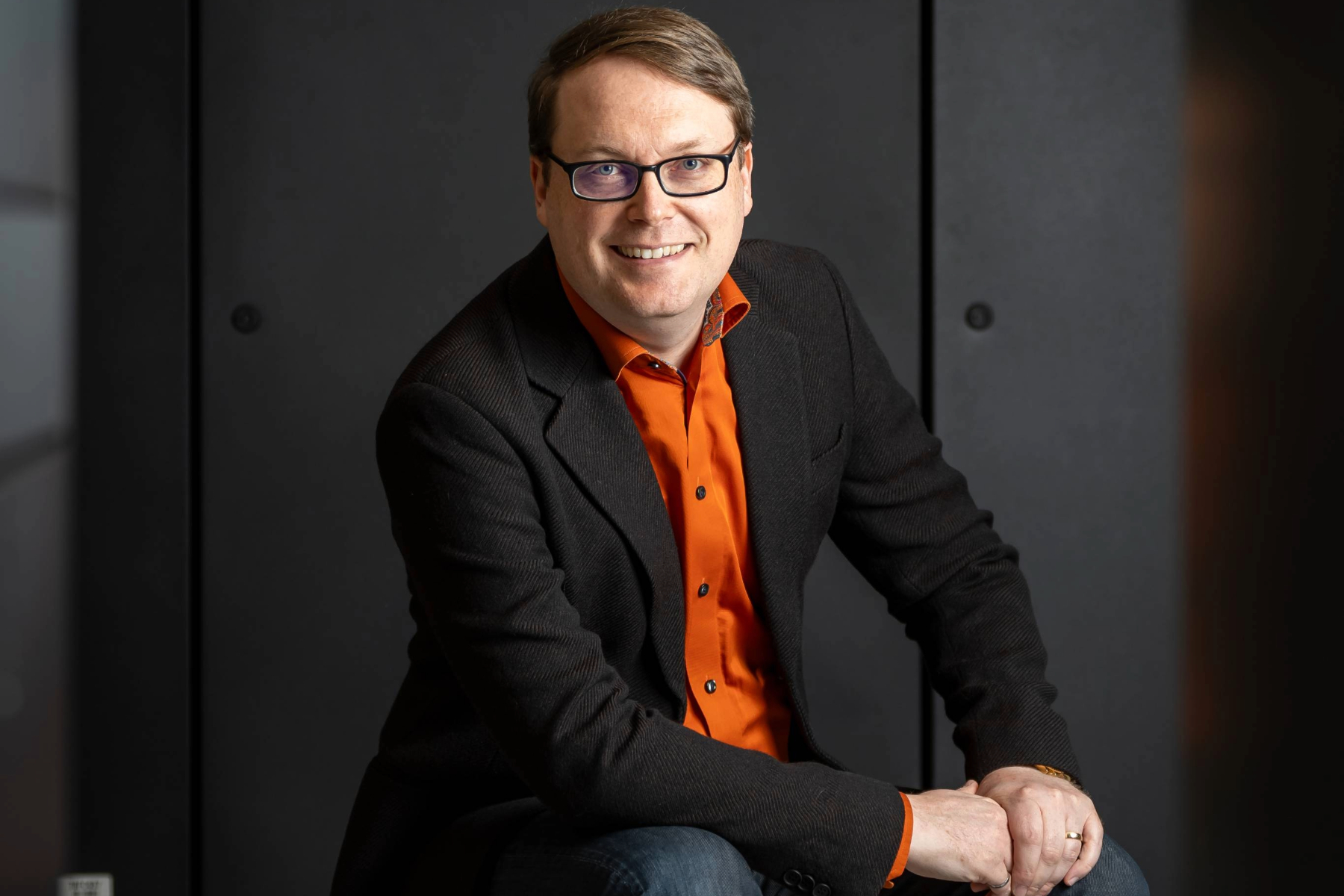


Picture a computer that can perform a billion-billion operations per second. A technology capable of solving complex problems, from designing new proteins for drug treatments, vaccines, and personalized medicine, to unlocking new frontiers in astrophysics, fusion energy, and artificial intelligence.
This is supercomputing, and Queen’s researcher Ryan Grant is on a mission to put Canada among the leading countries in supercomputing technology.
“World-class supercomputers enable us to ask better questions,” says Grant (Electrical and Computer Engineering). “Being able to compute larger models and examine data in finer detail, allows for deeper insights into things as wide-reaching as global climate, or as specific as how individual blood cells move through the human body. This technology is a powerful tool for research discovery, product development, and safety analysis, and it can supercharge productivity in our workforce and improve people’s lives.”
Grant highlights that Environment Canada relies on supercomputers for weather forecasting, disaster prevention, and climate change modeling, and internationally they were used to run sneeze trajectory simulations that led health authorities to recommend two-metre distancing during the COVID-19 pandemic.
As of September 2024, Canada’s top supercomputer is the 123rd most powerful in the world, making us the only G7 nation without a Top 50 supercomputer. With the United Kingdom nearing deployment of new upgrades, Canada will soon become the only G7 country without one in the Top 25.
“Technology development is moving so fast and governments around the world are pressed to keep up,” says Grant. “Part of our struggle in Canada is funding levels and models, as it takes significant long-term commitments from governments to build, maintain, and upgrade these systems.”
Currently, Canada’s supercomputers are dedicated solely to research and are not open for industrial uses. Industry must currently seek supercomputing power elsewhere, meaning their invaluable and often sensitive data is forced to cross outside the country. Grant believes that a public-private partnership model may be the way for Canada to maintain momentum, build Canada’s data sovereignty, and stay on the leading-edge of supercomputing.
“Opening supercomputing to industry could have an immense impact on Canada’s economy,” he says. “U.S. studies show a $43 return for every dollar invested, while in Europe it’s closer to 60:1. For Canada, the benefits to productivity and competitiveness could be huge, and allow us to keep up and even surpass current world leaders in the space. With enough time to train a pipeline of made-in-Canada supercomputer experts, we can be caught up in only a few years.”
In 2021, Grant returned to Canada from Albuquerque, New Mexico, after spending nine years working for Sandia National Laboratories (SNL), a global leader in supercomputer design.
After earning his PhD from Queen’s, he found that Canada had too few opportunities in his specialized field, so joined SNL in 2012 and rose quickly through its ranks. The team he built and led there would develop a software specification now integral to networking hardware used in all the world’s most powerful supercomputers.
Back at Queen’s, and now part of the Ingenuity Labs Research Institute in Queen’s Smith Engineering, Grant is using his experience to help provide opportunities for a new generation of students.
“Worldwide, many supercomputing centres are based at academic institutions. These environments are perfect because they provide a built-in training pipeline through which students receive hands-on experience with key technologies. They also have wide-ranging research activities across all disciplines that can require and benefit from supercomputing infrastructure.”
– Dr. Ryan Grant
Electrical and Computer Engineering, Smith Engineering at Queen’s University
Grant envisions Eastern Ontario as an ideal place to build a supercomputer for public and private use. The first element in its favour: geography.
“Often, governments and the private sector deal with sensitive data, so if they require supercomputing power to work with these datasets, it means physically visiting the supercomputer,” he says. “Kingston is centrally located between several large centres of government and industry—Toronto, Montreal, and Ottawa—putting us in an ideal location.”
Second element: people. Grant has assembled a lab of supercomputing researchers at Queen’s, the Computing at Extreme Scale Advanced Research (CAESAR) lab. Comprised of 18 experts, and adding another five in Fall 2024, his lab has quickly become one of the largest in the world focused on supercomputing architecture, and specifically software for supercomputing networks.
“We are the spark that lights the flame,” he says. “Canada has some of the best AI people in the world, so we need to train supercomputing architects to help them build out these capabilities.”
Foundational to Grant’s vision for Canadian supercomputing is the need for it to be developed to address the world’s greatest challenges, among the foremost of which is climate change—core to Queen’s mission to advance the UN Sustainable Development Goals.
“Supercomputing takes energy—megawatts of energy—so there can be a significant ecological cost to running large supercomputers, AI, and data centres, but we’re constantly innovating to increase the efficiency of these technologies to lessen these impacts,” says Grant, who has spent a decade focused on the issue and currently chairs an international group working to avoid energy wastage in supercomputing.
One area he is particularly interested in is double-purposing energy use: “Supercomputers, known for their high temperatures and water-cooling systems, are now being explored for their potential to repurpose heated water to warm buildings or generate additional clean power through steam, doubling their energy efficiency.”
With supercomputing technology improving rapidly, Grant aims to propel Canada into a new era of leadership, harnessing the power of more advanced systems to drive innovation and growth, and to tackle the world’s most pressing challenges.